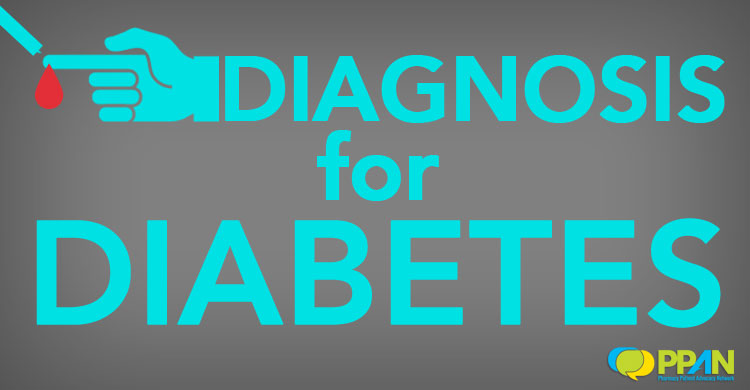Diagnosis for Diabetes
Although diabetes is a highly prevalent chronic ailment in modern society, it is not always diagnosed as early as it could be for proper intervention and treatment. This is due to the fact that the different types of diabetes can manifest at different stages of life, and may also be a factor of heredity. For this reason, an individual who shows no other risk factors for the illness could still discover that blood sugar levels are impacting wellness.
Understanding Types of Diabetes
Ultimately, diabetes is several expressions of a condition where the body is no longer able to properly process glucose. This can arise from physiological functions where the pancreas is unable to produce the proper amount of insulin to maintain this blood sugar balance, but the illness can also be triggered through resistance to insulin action.
While certain risk factors including obesity and lack of physical activity are linked to the development of diabetes, many people are unaware that they suffer from the condition. It is only once symptoms become apparent or hospitalization is required that individuals will being to address the implication of the condition.
- Type 1 diabetes – this is also referred to as juvenile diabetes and tends to be related to physiological defects that impact the manner in which insulin is produced. This tends to relate back to autoimmune issues in which the body has treated the insulin producing cells in the pancreas as foreign entities and destroyed them. As a result, children with this condition may not exhibit full blown symptoms until their teenage years, but they will need to regularly supplement with insulin shots for the rest of their lives.
- Type 2 diabetes – this expression of the condition is sometimes called adult onset diabetes, and can be directly related to lifestyle factors such as poor nutrition and obesity. The excess weight that a person is carrying will directly affect liver metabolism, which also means that the organ will not properly process insulin in order to break down the glucose. This is sometimes referred to as insulin resistance, and may be managed through lifestyle changes as well as insulin supplementation
- Gestational diabetes – this is a very specific form of diabetes that occurs only in pregnant women. The condition only lasts for the duration of the pregnancy, but can significantly affect the health of the child. However, gestational diabetes also makes it more likely that the mother, as well as the surviving child, will develop type 2 diabetes, although lifestyle changes can delay this eventuality.
- Pre-diabetes – although this is not an actual expression of the disease and can often exhibit no significant symptoms in sufferers, it is an important factor to be aware of in the diagnosis of diabetes. In this state, blood sugar levels tend to be consistently higher than normal, but not high enough to indicate either type of the condition. However, people with this diagnosis can effectively take preventive measures and continue to monitor blood sugar levels for better health.
The Difficulty of Diagnosis
Unlike some other chronic conditions, diabetes can be determined relatively easily through specific blood panels. However, since many people can be asymptomatic from pre-diabetes through the full blown onset of type 1 or 2 of the disease, many people do not receive the proper screenings that can also lead to better health outcomes.
While pre-diabetes is always asymptomatic, type 1 and 2 diabetes can exhibit health changes that can indicate that screening is necessary.
The symptoms for type 1 diabetes include:
- Insatiable thirst
- Greater appetite
- Increased need and frequency of urination
- Fatigue
- Blurred vision
- The smell of fermented fruit emanating from the body or mouth

The symptoms for type 2 diabetes include all of the above manifestations, with the exception of the scent of fruit. However, frequency of urination is more pronounced at night, and slow healing of wounds and bruises is also a factor in type 2 diabetes.
Gestational diabetes can express as fatigue, dizziness, and blurred vision, but is usually diagnosed more quickly, as pregnant mothers may have blood panels run during regular check-ups.
Verifying Results
Ultimately, specific blood tests are the most accurate manner of verifying whether a person has diabetes. Three main tests are conducted, sometimes in conjunction, in order to correlate the results and determine the best course of intervention.
- A1C Test – this is used primarily in cases where diabetes type 2 of pre-diabetes is suspected. This type of test monitors blood sugar levels over the course of three months in order to detect patterns of illness. Patients do not need to fast before this test, and it can be conveniently performed by a lab at any time. The results are reflected as a percentage of sugar levels, and compared to normal ranges. For an A1C test, anything below 5.7% is considered normal. Above this percentage but below 6.4% can indicate pre-diabetes, while levels higher than 6.4% indicate type 2 diabetes.
- Fasting Plasma Glucose Test – this may be used for both type 1 and 2 diabetes as well as pre-diabetes. In this case, patients are asked to fast overnight and then have blood drawn first thing in the morning. While this is considered the most accurate of the tests, it also requires more preplanning than some of the other methods of diagnosis. However, results for the fasting plasma glucose test are reflected as actual levels of sugar in the bloodstream. As a result, levels of below 100mg/dL are considered normal, while ranges up to 126 mg/dL are considered to indicate pre-diabetes. Anything above the 126 mg/dL level is considered diabetic, although a repetition of the test is used to confirm the diagnosis.
- Oral Glucose Tolerance Test – this particular test is able to accommodate diagnosis for any of the types of diabetes, and also provides highly accurate results regarding the rate of sugar metabolism. Similarly to the fasting test, the patient is required to abstain from food and drink for at least eight hours, before blood is drawn to generate a baseline measure. The patient is then required to ingest 75g of dissolved glucose and have a second blood test drawn after two hours. If the second test indicates blood sugar levels of less than 140mg/dL, then the patient is considered healthy. However, measures that are will require a second glucose drink and blood test after two hours to confirm whether consistent levels of 200 mg/dL or higher indicate actual diabetes.





